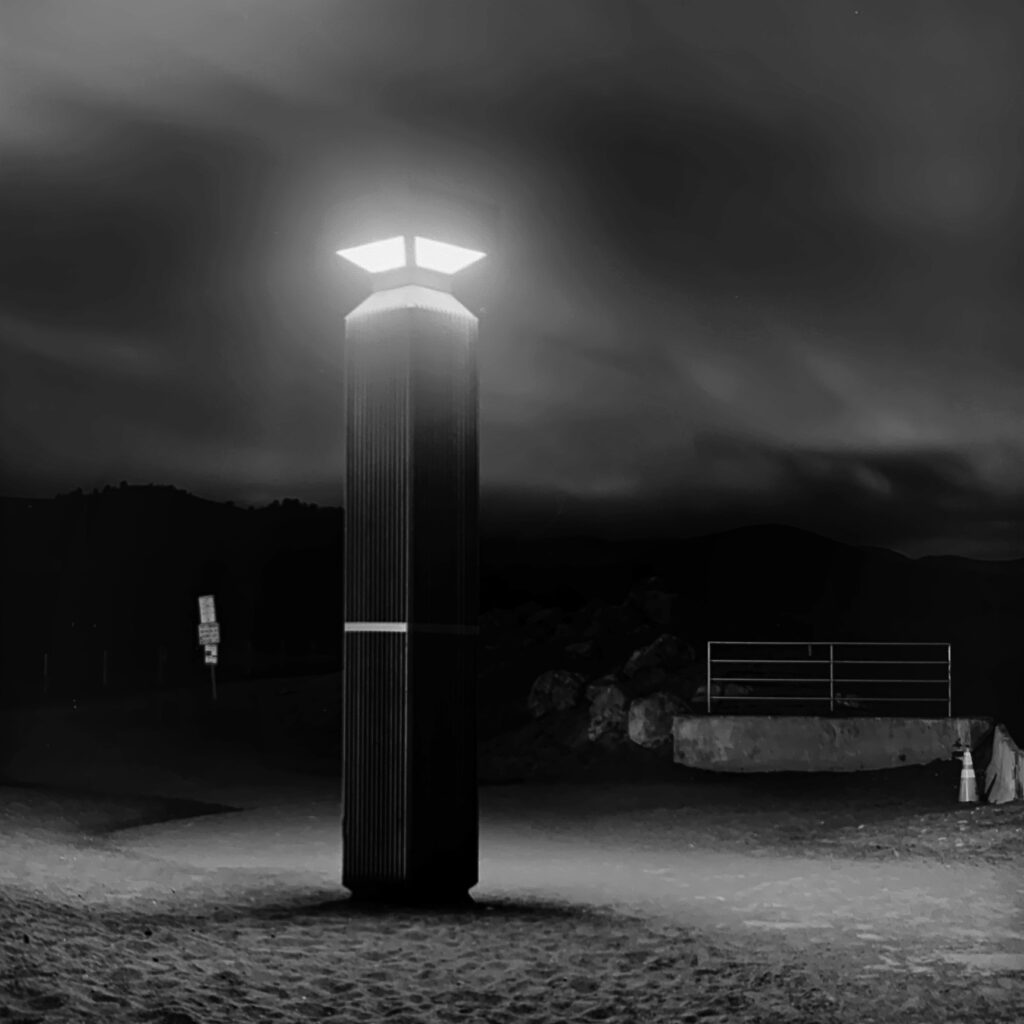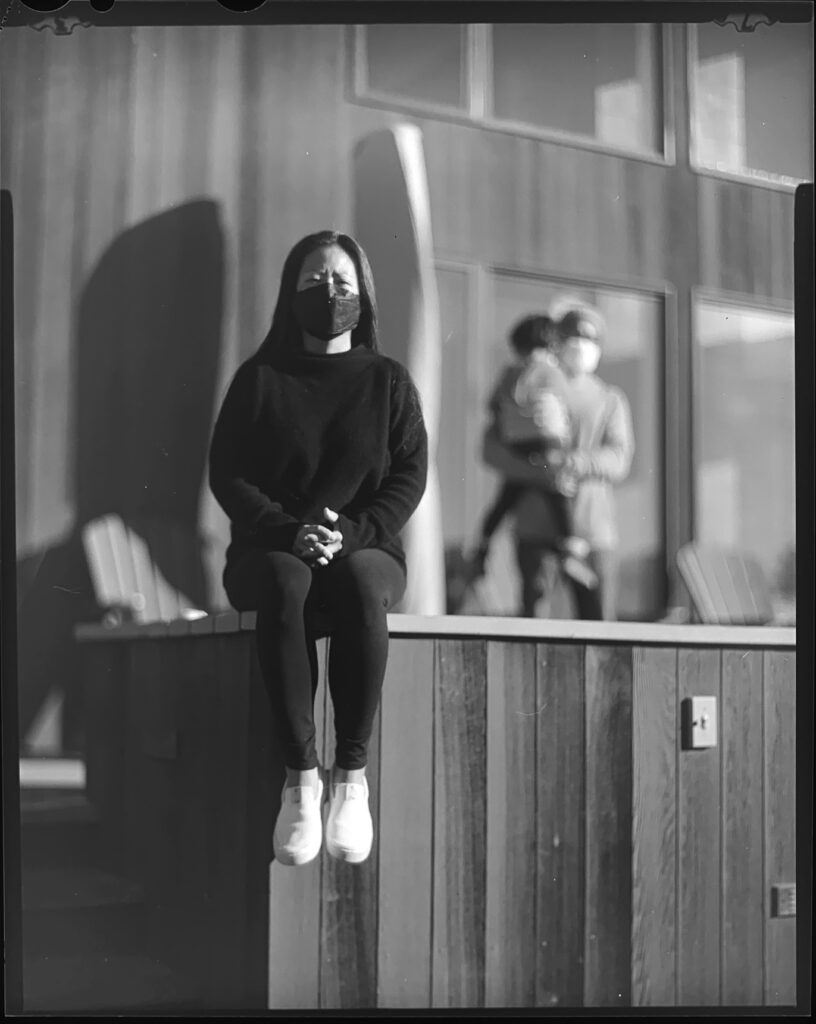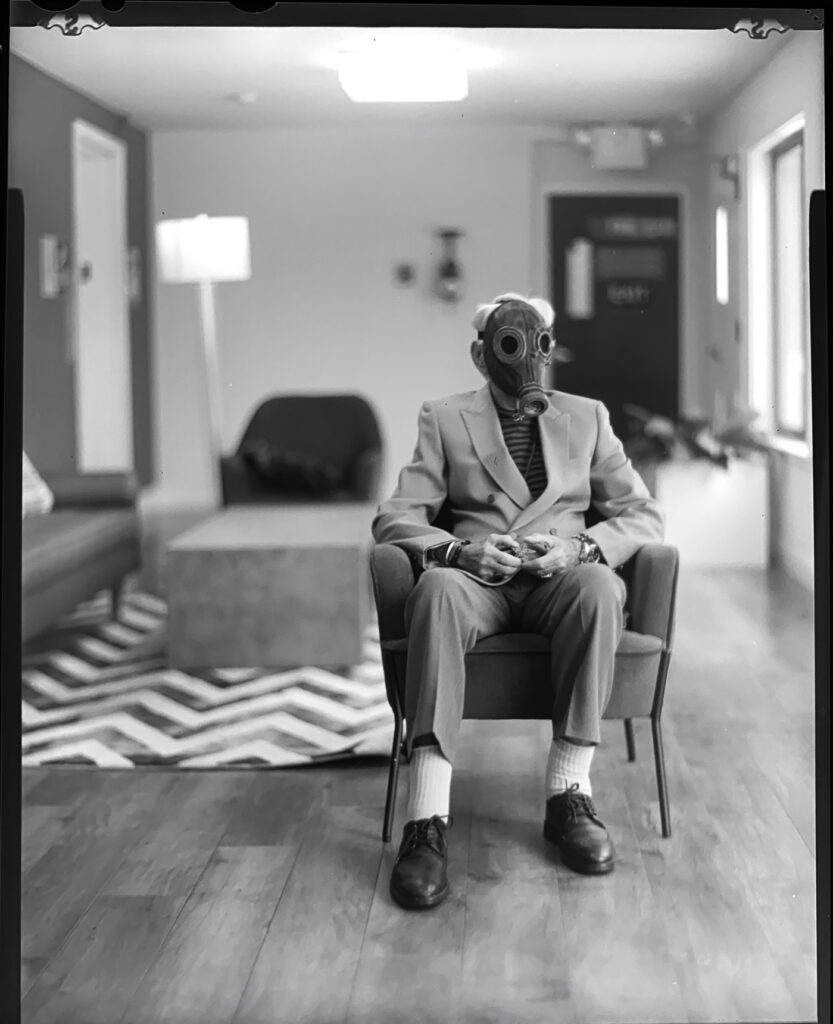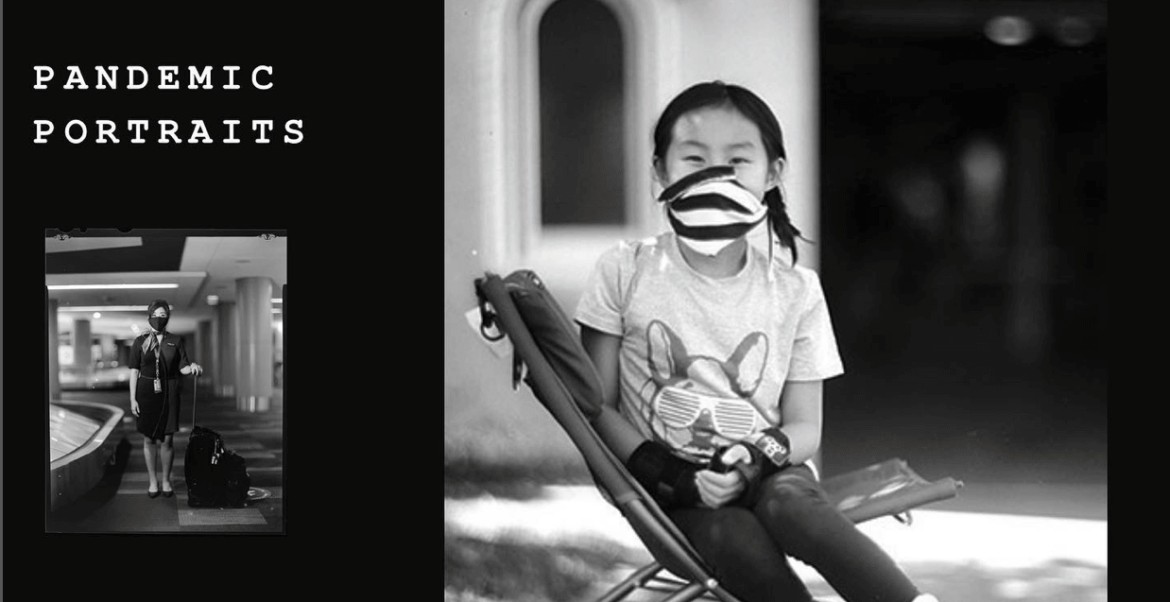By Tyler Callister
“I wanted to capture more than a portrait of someone. I wanted to feel their soul.”
Analog photographer Gordon Szeto shared these words with students in the Academy of Art University’s School of Photography (PH) for a special slideshow talk on Tuesday, July 26. As part of a series of discussions from analog photographers in the Contemporary Topics in Photography class led by PH Associate Director Timothy Archibald, Szeto spoke about his creative process and two complementary photo series: “Pandemic Portraits” and “Pandemic Nights.”
As students watched, Szeto delved into the stories behind his striking black and white photos, which he shot during 2020, at the peak of the COVID-19 pandemic—stern-faced people wearing masks for “Pandemic Portraits” and quiet, meditative San Francisco nightscapes for “Pandemic Nights.”
“I started shooting these series because of the pandemic,” said Szeto. “I was tired of sitting at home. I wanted an excuse to go out and see people.”

For “Pandemic Portraits,” Szeto would ask his subjects to don face masks and stare straight into the camera. With “Pandemic Nights,” he walked San Francisco at night to capture the streets draped in fog.
Collectively, the two series tell an eerie story of Bay Area life during the pandemic—an aesthetic the class spoke of admiringly.
“I am blown away by this work,” said M.F.A. student Garion Worldslayer during the class. “I’m a fanboy.”
He added, “Everything is so carefully spaced. It’s so interwoven and fluid. That attention to detail is inspiring to me.”
Szeto, whose day job is as co-owner of the store Glass Key Photography on Sutter St., explained the stories behind many of his photographs. For the portraits, he enlisted friends and acquaintances. He went out alone to capture the contemplative moments in the nightscapes.
One compelling portrait showed a woman sitting on a backyard deck with hands in her lap while her husband and child stood in the background, out of focus. The woman sits slightly to one side of the photograph, clad in black.
“I just had this idea of her; she’s a fairly new mother,” said Szeto. “I wanted her to be the centerpiece.”
When Archibald, who moderated the 50-minute talk, asked how he planned the photo, Szeto said, “I’m kind of organic in my shots. There’s very few where I really set them up.”
His natural, improvised style showed up in another shot of his friend “Ivan.” Ivan, an older gentleman, sat at home in a chair for the photo, wearing a formal suit. Szeto said his friend didn’t want to wear the COVID-19 face mask at first. But when Szeto looked away briefly and turned back, he found a surprise.
“I set up the camera, turned around, and he had this full-on gas mask,” Szeto said with a laugh.


As Szeto wrapped up his presentation, students had the opportunity to explore their guest’s photography gear, specifically the 4×5 large format view camera he uses for portraits. Putting their heads under the black sheet, students practiced focusing and shooting the analog camera like photographers of the past.
Explaining his equipment to the students, Szeto shared that he uses sheet film (Ilford FP4 black and white), carefully inserting one sheet at a time for each photograph. He develops all of his black and white prints using his home darkroom.
Speaking after the class, Archibald—a commercial photographer with 25 years of experience—talked about Szeto’s unassuming personality. He praised Szeto for his humility, saying his casual style belies his talent.
“He was such a quiet and humble guy,” he said. “His work had a simplicity to it, where you felt like you could do it yourself.”
According to Archibald, Szeto’s caliber of work for a relatively unknown photographer makes the art form feel more accessible. He said that Szeto’s talk gave his students that rare impetus: Inspiration.
“They loved the work,” said Archibald. “The thing they kept saying is, ‘This makes me want to go out and take pictures.’”
